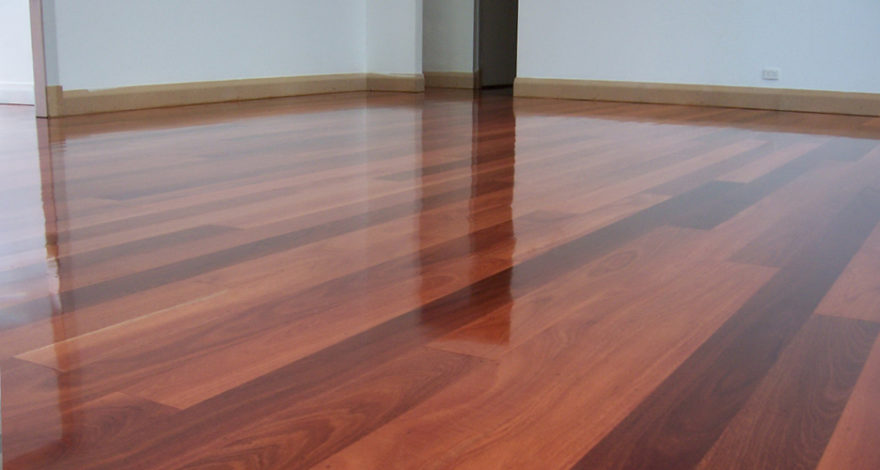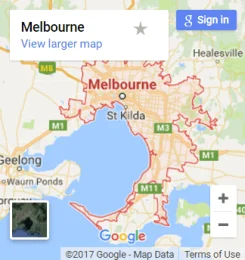So, you’re looking to give your floors that extra shine, huh? Well, you’ve come to the right place! When it comes to achieving that sparkling finish, choosing the right polish is key for floor polisher Melbourne experts.
Whether you have hardwood, laminate, tile, or any other type of flooring, there’s a product out there that’ll make them gleam like new.
In this guide, we’ll explore some of the best options for polishing floors and share some insider tips on how to get that professional-grade shine right at home.
So, grab your mop and get ready to transform your floors into a dazzling masterpiece! Let’s dive in and discover the secrets to achieving that enviable sparkle.
Types of Floor Polishing Products
Floor polishing can transform a dull surface into a gleaming spectacle that not only enhances the aesthetic of a space but also preserves the floor’s material. Choosing the right type of floor polish is crucial for achieving a pristine finish without damaging the flooring.
Let’s explore some common types of floor polishing products.
Wax-based Polishes
Wax-based polishes are a traditional choice for floor care, particularly favoured for their rich, natural finish. Ideal for wood and cork floors, these polishes help fill in scratches and impart a lustrous sheen that is hard to achieve with other materials. The application typically involves spreading a thin coat of wax, allowing it to dry, and then buffing it to a shine. Regular maintenance is required to keep the floor looking its best.
Water-based Polishes
Water-based polishes offer a more environmentally friendly alternative to their wax and oil counterparts. They are easier to apply and faster to dry, making them a practical option for busy households and commercial spaces. Suitable for a wide range of flooring types, including vinyl, laminate, and some hardwoods, water-based polishes enhance floor durability while providing a glossy finish. They do not emit harmful fumes, making them safer for indoor use and around pets.
Oil-based Polishes
For those seeking deep conditioning together with a sparkling finish, oil-based polishes are an excellent option. They penetrate wood floors much more deeply than wax-based products, nourishing the wood and preventing it from drying out and cracking. Oil-based polishes often require longer drying times, and they can be more labour-intensive in terms of application and maintenance. However, the resultant resilience and richness of colour they bring to floors are often worth the extra effort.
Factors to Consider When Choosing a Floor Polish
When polishing your floors, the outcome often dramatically hinges on the type of floor polish you choose. The right polish enhances the floor’s appearance and preserves its material. To ensure you’re picking the perfect product, several factors should be taken into account before making your selection.
Flooring Material Compatibility
Different floor materials will require distinct types of polish. For instance, hardwood flooring benefits from oil-based polishes designed to enhance the natural grain, while linoleum or vinyl floors do well with water-based solutions that won’t cause damage over time.
Before buying any polish, get the recommendations from floor polisher Melbourne experts on compatibility to avoid damage. Using the wrong type can not only make the floor look dull but also potentially harm the floor’s integrity.
Gloss Level Preferences
The level of gloss finishes you desire is also an essential factor. Polishes come in high-gloss, semi-gloss, and matte finishes. High-gloss solutions deliver a shiny, reflective finish, which helps to make the room appear brighter and more spacious.
Semi-gloss offers a subtle shine without the intensity of high-gloss, providing a good balance of sheen and maintenance.
Matte finishes, on the other hand, give a more natural look, ideal for those preferring a less shiny surface. Consider the gloss level that best suits your aesthetic and lifestyle needs.
Application Ease
Another critical aspect to consider is the ease of application. Some floor polishes require complicated preparation and application processes, which might include buffing, multiple coats, and specific drying times.
If convenience is a priority, opt for products that are easy to apply and don’t require extensive preparation.
Additionally, consider the drying time involved and the potential for foot traffic interruption in your space. Quick-dry formulas can allow rooms to be used sooner, minimising disruption to your daily activities.
DIY Floor Polish Recipes for a Chemical-free Clean
In recent years, there has been a growing inclination towards using natural and safer methods for cleaning, especially for those worried about chemical exposure. Here are some simple, homemade floor polish recipes that can help you keep your floors both clean and gleaming without resorting to harsh chemicals.
Vinegar and Water Mixture
A simple but effective floor-cleaning solution can be made using just vinegar and water. To create this mixture:
– Combine 1/2 cup of white vinegar with 1 gallon of warm water.
– Mix thoroughly and apply to the floor using a mop.
This solution works particularly well on tile, vinyl, and laminate floors, cutting through grime and leaving a streak-free finish. However, it’s advisable to avoid using vinegar on natural stone or hardwood as the acidity can damage these surfaces.
Olive Oil and Lemon Juice Blend
For a natural polish that not only cleans but also conditions wood floors, try an olive oil and lemon juice blend:
– Mix 1/2 cup of olive oil with 1/4 cup of fresh lemon juice.
– Add water to dilute and mix well before applying with a soft cloth or mop.
The olive oil nourishes the wood, while the lemon juice helps to remove dirt and disinfect. This blend is ideal for hardwood floors, giving them a beautiful, conditioning shine that enhances the wood’s natural beauty.
Baking Soda Polish
Baking soda is a gentle yet effective cleaner that’s great for removing tougher stains and scuffs on tile and vinyl flooring. To make this polish:
– Create a paste with 3 parts baking soda and 1 part water.
– Apply directly to stains or all over the floor, as needed, and scrub gently.
– Rinse with clean water to remove any residue.
This method will help brighten up floors and is especially effective in areas that are prone to heavy traffic or dirt buildup.
Each of these DIY recipes offers a safe and effective way to maintain and polish floors without the use of chemical-heavy products, ensuring a healthier environment for your household.
Tips for Effective Floor Polishing
Proper Cleaning Before Polishing
To achieve a sparkling finish when polishing your floors, it’s essential to start with a properly cleaned surface. Dirt, grit, and grime can not only hinder the polishing process but can also scratch and damage the floor’s surface during polishing.
Begin with sweeping or vacuuming to remove loose particles. Follow this up with a thorough mopping using a cleaner appropriate for your specific flooring type.
Ensure the floor is completely dry before applying any polish. This helps the polish adhere better and evenly, ensuring a smoother, more attractive finish.
Use of Microfiber Cloths for Application
When applying floor polish, the type of cloth you use can make a significant difference. Microfiber cloths are ideal for this task due to their soft texture and high absorbency. They spread the polish evenly without leaving streaks or lint behind, which are often issues with other types of clothes.
When using microfiber, pour a small amount of polish directly onto the cloth or floor, then spread it gently in a circular motion, making sure to cover the surface evenly. This method reduces waste and ensures that you don’t overapply the product.
Buffing Techniques for a Glossy Finish
After applying the polish, the next step is buffing, which enhances the floor’s shine and helps in setting the polish. Use a clean, dry microfiber cloth or a buffing machine for larger areas.
Start from one corner of the room and move systematically to the other end. If manually buffing, use circular motions and apply consistent pressure throughout.
For machine buffing, follow the manufacturer’s instructions. Regular buffing not only maintains the sheen but also extends the life of the polish by forming a protective layer that wards off scuffs and scratches.
Maintenance Practices to Keep Your Floors Sparkling
Regular Dusting and Vacuuming
Consistent floor maintenance is key to keeping your floors looking their best. Regular dusting and vacuuming are simple yet crucial practices that remove the daily accumulation of dust and dirt, which can dull the finish of your floor over time.
It’s advisable to use a soft-bristled broom or a vacuum with a setting for hardwood floors to avoid scratching the surface. This routine not only keeps your floors clean but also prepares them for more thorough weekly or monthly cleaning and polishing sessions.
Avoiding Harsh Cleaning Solutions
Maintaining the lustre of your polished floors also involves being cautious about the cleaning products you use. Harsh chemicals can strip away polish and degrade the finish of your flooring.
Always opt for pH-neutral cleaners that are specifically formulated for your floor type, whether it’s hardwood, tile, or laminate. Read labels and avoid products that contain abrasive substances, bleach, or ammonia.
Additionally, test any new cleaner on a small, inconspicuous area of your floor to ensure that it doesn’t cause damage or discolouration.
Professional Floor Polishing Services
While regular home maintenance does wonders for keeping floors in good condition, occasionally bringing in professional floor polishers can take your floor’s shine to the next level.
Professional floor polisher Melbourne experts have the equipment and expertise to clean and polish floors deeply and more thoroughly than standard home methods.
They can efficiently handle large areas and different types of flooring, ensuring uniformity and quality.
Investing in professional polishing once or twice a year helps extend the life of your floors and keeps them looking as good as new, which can be particularly beneficial before special events or as part of a spring-cleaning routine.
Conclusion
In the quest for that elusive sparkle on your floors, selecting the right product and approach can make all the difference.
Whether you opt for natural solutions like vinegar and water or high-tech commercial polishes, the key is to use products appropriate for your specific flooring material. Regular maintenance combined with the right polishing technique ensures long-lasting shine and cleanliness.
Remember, the effort you put into choosing and applying your floor polish reflects directly on the outcome—gleaming floors that make every room shine brighter.
If you don’t want to take the risk of making the wrong choice, then you can hire professional floor polishers Melbourne from Total Floor Sanding and Polishing. We are a leading floor polishing service provider to ensure quality results every time.


